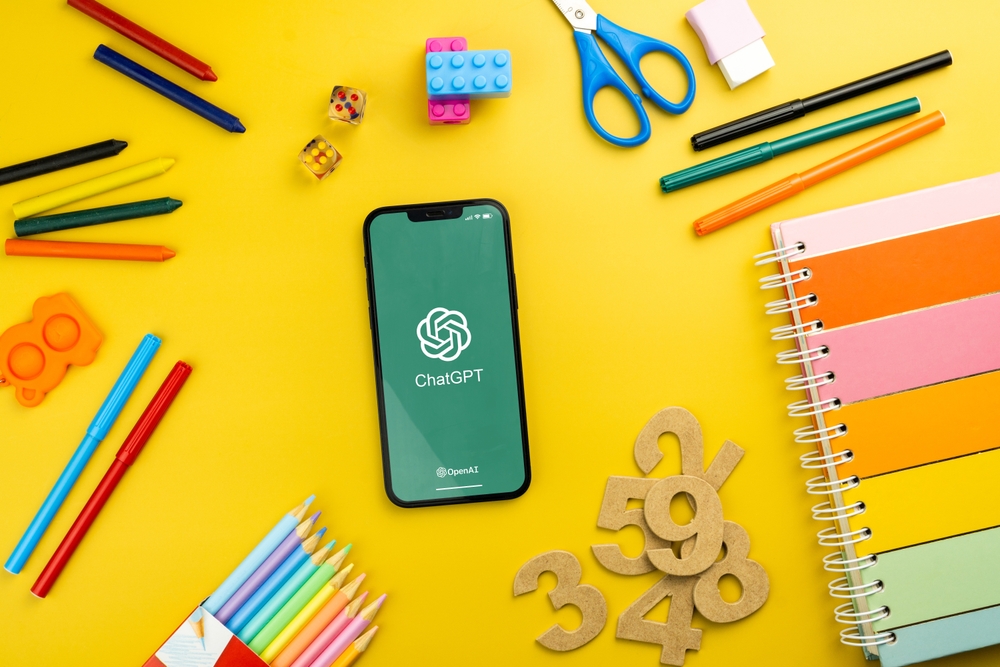Emma Loore Sinitamm, who oversees tech at Mustamäe Riigigümnaasium, a public high school in Tallinn with 1,100 students, knew she couldn’t stop students from consulting GenAI chatbots. So, during the 2024 school year, she bought one ChatGPT license for the teachers to experiment with and share. “It gets used a lot,” she says.
This Fall, in what is being billed as a world first, the rest of Estonia’s public high school teachers are taking the plunge as a part of the country’s AI Leap 2025 initiative to integrate AI capabilities into education, providing free AI tools and a framework for their use in learning.
Launched by Estonian President Alar Karis as a public-private sector collaboration, AI Leap builds on the legacy of Estonia’s historic Tiger Leap project from 1996 that computerized Estonian schools and lead the foundation for the country’s emergence globally as a digital pioneer.
“Artificial intelligence has permanently changed the world, and like all sectors, the education system must adapt to these changes,” Karis said in a statement. “By implementing the best available technology in the education system and making learning not only smarter but also more personalized, it will make Estonia become the world’s smartest nation. This way AI Leap helps smart solutions to reach all sectors and increase the international breakthrough capability of Estonians and the Estonian economy.”
The AI Leap project, which was showcased at the Tallinn Digital Summit Oct.9 and 10 by Kristina Kallas, Estonia’s Minister of Education and Research, has concluded deals with both OpenAI and Google to use specially adapted versions of Chat GPT and Gemini. At this stage, teachers for grades 10 and 11 have access to one of the platforms, but students do not yet have access. In ongoing pilot projects some schools are using special educational versions of OpenAI’s ChatGPT and Google’s Gemini. In the coming months, the goal is to make both options available to all public high school and vocational school students, allowing them to choose between Gemini and ChatGPT.
The government is already talking about additionally organizing training for teachers of grades one to nine. It will be up to the teachers to decide on specific use cases.
Estonia already has widespread ChatGPT adoption, with approximately one account for every four citizens, according to the government. The country ranks among the top 15 globally for ChatGPT usage, with Estonians primarily using the tool for tutoring, teaching, programming and writing tasks.
Partnering With U.S. Tech Giants
Given Europe’s current focus on digital sovereignty Estonia wanted to offer a European educational chatbot as an alternative to the U.S. models but none were available, Riin Saadjärv, the ministry of education’s head of education technology, said in an interview with The Innovator. “We started negotiating with [French AI unicorn] Mistral AI but their product was not at a point to offer what we want.
Estonia hasn’t closed the list of cooperation partners. “As soon as someone has a model ready from Europe that meets our criteria we are ready to negotiate,” says Saadjärv.
To ensure that the public private partnership respects Europe’s strict data privacy rules OpenAI and Google were required to sign agreements with the Estonian government on data management. The agreement specifies that the tech giants can’t’ train their large language models ( LLMs) on student data and must store data associated with AI Leap in agreed upon data centers .
ChatGPT Edu is a version of ChatGPT built for large-scale deployments across educational institutions. The version offered to Estonia includes OpenAI’s latest models, GDPR compliance, enterprise-level security and controls, according to OpenAI.
The partnership represents OpenAI’s first government deployment of ChatGPT Edu. The product has previously been adopted by individual institutions, including France’s ESCP, the UK’s Oxford University and London Business School, Harvard University and the California State University System.
Encouraging Self-Directed Learners
OpenAI will provide technical support and knowledge-sharing for specific educational applications, including custom GPTs focused on teaching and learning. The government plans significant investments in teacher training to ensure effective implementation.
The kids are ahead of their teachers. “They are using it anyway, we can’t block them, so we might as well teach them how to use it wisely,” Sinitamm said in an interview with The Innovator.
In Turkey and the Netherlands, experiments using LLMs to teach coding and math ended with mixed results: some pupils became so dependent on the LLM that, when it was removed, they performed worse than classmates who had never used it, according to press reports.
Estonia is confident that its approach will avoid this pitfall. “Our approach in AI Leap and in our whole education system is to create self-directed learners,” says Saadjärv. “We want them to understand that they are at school to learn, to become smarter and can use AI tools not to cheat but to support their learning process. If they rely entirely on ChatGPT then no learning actually happens.”
The self-learner approach is built into ChatGPT Edu. The product was co-developed with scientists from OpenAI but also Estonian scientists. “We were able to bring in the best scientists we have – not just in AI but in pedagogical methods – to include the broader knowledge we have about learning,” says Saadjärv. “The model is designed in a way that doesn’t give an answer,” she says. “It asks you a question to get you to create an answer. “
“At first the students didn’t like it at all because they were used to using ChatGPT as a quick answer provider,” she says. “We are explaining to students that they need to go through a hard learning process by themselves in order to get to know something. We have created some courses for this about how to learn and how to prompt.” But since ChatGPT has been around since 2022 many students have already developed negative usage patterns, she says, so “we are aware we have a long road ahead. It is not going to be an easy one.”
At Mustamäe Riigigümnaasium, the Tallinn high school, teachers are using ChatGPT Edu to augment lesson plans. For example, while reading a novel students might use chatbots to make a timeline of the activities of the characters and by making pictures and visuals of specific characters. But says Sinitamm, who oversees the school’s tech, ChatGPT Edu is not as good as regular ChatGPT for some functions, including the creation of images. “We will see if the students actually use [ChatGPT Edu],” she says. “Most of them want to use the programs they already use.”
Some teachers are also likely to be set in their ways. While teachers at Mustamäe Riigigümnaasium tend to be open to trying new things the same is not true for all educators. “We have a saying in Estonian that it is easier to move a graveyard than it is to change a single thing in the school system,” says Saadjärv.
The world will be watching Estonia to see if ChatGPT and Gemini can prompt the desired change in the way students learn and usher in an age of personalized education.
This article is content that would normally only be available to subscribers. Become a subscriber to see what you have been missing.






